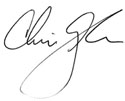There may be more challenging con-ditions to manage than glaucoma. Make that glaucomas. But I’m not aware of any whose diagnosis is subject to so many different and changeable factors; whose incidence is so widespread; whose consequence when untreated (and sometimes even treated) can be blindness; and that suffers from such a high level of non-adherence to therapy by patients.
Little wonder then that the search for a definitive method of tracking progression of the disease, and thus a reliable guide to treament choices and to measure the effectiveness of a chosen treatment, has been such an important part of glaucoma research.
As with most things in medicine and elsewhere in life, we look to technology for answers. That’s why we chose to devote
our cover story this month to a review of what the new technologies can do and what’s still to be worked out in terms of tracking glaucoma’s progression. You can find that on p. 34.
A cautionary study on this subject came from the University of Michigan’s Kellogg Eye Center,
recently published in Ophthalmology.1
The investigation focused on trends in eye-care provider use of three methods for evaluating patients with open-angle glaucoma or suspected glaucoma: visual field testing, fundus photography and other ocular imaging technologies, principally confocal scanning laser ophthalmoscopy, scanning laser polarimetry and optical coherence tomography.
Over eight years, the researchers found a substantial increase in the use of newer ocular imaging devices and a dramatic decrease in the use of visual field testing in the management of patients with and suspected of having open-angle glaucoma. The odds of a patient undergoing visual field testing decreased by 44 percent from 2001 to 2009. By comparison, the odds of undergoing testing using the newer ocular imaging devices increased by 147 percent in the same timeframe.
“Until these newer imaging devices can be demonstrated to identify the presence of open-angle glaucoma and capture disease progression as well as more traditional methods do, providers should use these devices as an adjunct to—not a replacement for—visual field testing and fundus photography,” the lead author noted.
Predictably, no silver bullet has emerged as yet. Technology is providing some better approaches and some improvements. But for the foreseeable future, managing glaucoma will continue to rely in large part on a partnership with your patient, and at least in some part, on some fairly unexciting technology.
 |
1. Stein J, Talwar N, LaVerne A, Nan B, Lichter P.
Trends in Use of Ancillary Glaucoma Tests for Patients with Open-Angle Glaucoma from 2001 to 2009. Ophthalmology, 2012 Jan 3. [Epub ahead of print]



